Calgary
10 Creative Things To Do At Home To Beat The Cabin Fever

I don’t know if it is the same for everyone reading this but the lack of socializing and the amount of TV that has been watched over the last two weeks has driven us all a little crazy. If you’re sick of that “are you still watching” screen and find yourself un-enthused by reading further into the current pandemic, you may get a kick out of some of these 10 things to get creative at home.
No, we are not trying to sell you anything
Change up the vibe in your living room or bedroom

Take a look at your furniture, then take a piece of paper and draw out a few different floor plans for your living room or bedroom. Say if you have five new floor plans for your living room, pick one and try it out. Fresh vibes feel great!
Listen to one album start to finish every morning
We all have those artists we love and some we “kinda” like. Take the opportunity to play a full album and really appreciate the artist’s style. You may find a lot of songs that you personally like but didn’t have the highest plays or reach the top 100 in the country.
Start a blog or write for open forums
There are a lot of people out there writing blogs and creating content everyday in different ways. Keep in mind a lot of people have social media as their blog, such as a fashion stylist using Instagram to keep her followers aware of what she is up to on her journey. Whether or not you enjoy writing on paper, typing into a word document, enjoy taking photos or love editing videos, it’s never a bad time to keep friends updated on what you’re up to.
Open forums have received a bad rap in recent years from a small minority of insecure fools thinking that freedom to write anything means they can bash and insult. A large majority of the open forums these days have consistent moderation that track conversations closely. Thus providing higher quality discussion and opinions. One of my favorites is Quora. It allows you to ask and answer questions within a network of hundreds of thousands educated professionals.
Try out new clothing styles

Have you ever thought or even care about how you look in your current “looks”? Has it ever ran through your mind in the past that you can inspire others to be more creative in how they want to look? Going through what you like to wear and what looks good can be a nice boost of confidence.
Can’t hurt to take the time to go through your current wardrobe and lay some outfits out on your bed to see what could work differently. Make a list of your favorite brands and have a flick through their website or Lookbooks for upcoming seasons. Try matching colors, patterns, brands or even see how that denim suit looks on you.
Change up your diet
Let’s take a second to remember that this is not easy, especially when we are faced with boredom among an array of daily distractions. Adding a light structure to your day working from home or even how you manage your weekend will feel awesome after a week of consistency.
Whether or not you have an education in nutrition, have a personal training certification or just care about your weight, trying something new will give you that extra drive to reap the benefits. Crash juice diets, keto friendly food or going down the vegan route, why not give it a try for even one week! Take on the challenge and do right by yourself to tell your friends how your experience was from real practice.
Make a stretching routine to do every morning

We are talking about within the first 30 minutes of getting out of bed. Stretching can release endorphins, increase blood flow and give your body that extra boost for the day. Why not check out some stretching routines on Youtube and take from them what works for you? There is an endless amount of videos with experts demonstrating multiple movements. Here is a great article if you would like to learn more about the benefits of stretching in the morning.
An average electric kettle and even most Keurig brand coffee makers take approximately 2-3 minutes to boil and thus make a cup of coffee. Take that 2-3 minutes and see how many stretches you can fit in. Here’s an example of what you can get done in that amount of time – “3 Minute Stretch Routine”.
Find awesome podcasts, or start one
Most of us are aware of this new trend in digital content to consume. The crazy part is that this industry continues to grow. You can find a podcast relating to almost anything these days, whether or not you are trying to grow your skills in sales, learn about science, struggling with mental health, seeking out travel advice, want to hear some jokes…you name it, there is something out there. Were you aware that a lot of famous comedians have podcasts?
Podcasts have also been added to our music streaming platforms like Spotify or Apple Music. Why not have a flick through the categories and jump into some topics you are curious about, you may get hooked. Youtube is another great platform for podcasts listeners who preview a visual to keep their interest. One of my favorites is Joe Rogan’s podcast “PowerfulJRE” who has interviewed hundreds of guests with some well known names like Elon Musk and Neil Degrasse Tyson.
Physically write out your bucket list

Here is one that can prove difficult if you’re stuck standing there with two things on a page and scratching your head thinking they’re not crazy enough. A tip to getting a full list is not caring about the level of severity, how minuscule or how aspirational things can be to be on your bucket list.
Ever high fived a clown? Have you ever wanted to float down the bow river? Have you ever created a pyramid of cards? Have you ever wanted to drive a Lamborghini around Las Vegas? How hard is it to book a trip on a hot air balloon?
Dive deep and think about what you would like to have completed in your mind. Once that is done then having it physically written will begin that journey to making them all real.
Make a real itinerary for a trip for later in the year or next year
I personally enjoy doing this, taking a look at routes for road trips and exploring the options for hotels and campsites along the way. Why not get together with your other half or friends and bounce some ideas off each other for what types of places and trips interest you.
Then once you’ve made some clear direction then why not have some fun with building a travel itinerary together? Look at cities, flights, accommodation, prices, transportation, monuments, tourist attractions and travel advice. It can be very exciting once you start to zero in on a real plan. Make a budget, start saving and look forward to something that you feel confident in.
Go through old photos

There has to be a treasure trove of old photographs of you somewhere, maybe it’s a dusty box at your parents house or maybe you still have all your photos on Facebook from the last decade. Regardless it is always good to reflect on who you were in the past and who you have become to date.
If anything it will most likely give you a good laugh and a reason to reach out to some lost connections from your past. Nothing says “it’s been so long” then an embarrassing photo of you both together.
For more stories visit – Todayville Calgary
Red Deer Public Schools with a creative way to welcome students back to school – “now online”
Alberta
Building a 21st century transit system for Calgary

From the Frontier Centre for Public Policy
Calgary Transit is mired in the past, building an obsolete transit system designed for an archaic view of a city. Before the pandemic, transit carried 45 percent of downtown Calgary employees to work, but less than 10 percent of workers in the rest of the Calgary urban area, showing that Calgary Transit doesn’t really serve all of Calgary; it mainly serves downtown.
That would have worked in 1909, when Calgary’s first electric streetcars began operating and most jobs were downtown. By 2016, less than 15 percent of Calgary jobs were downtown, and the pandemic has reduced that number further.
Rather than design a transit system that serves the entire urban area, Calgary Transit light-rail system reinforced its downtown focus. Transit ridership has grown since the city’s first light-rail line opened in 1981, but it was growing faster before the light rail began operating than it has since then. Now Calgary Transit is planning even more downtown-oriented light-rail lines.
Light rail is an expensive form of low-capacity transit. The word “light” in light rail refers not to weight but to capacity: the American Public Transportation Association’s transit glossary defines light rail as “an electric railway with a ‘light volume’ traffic capacity.” While a light-rail train can hold a lot of people, for safety reasons a single light-rail line can move no more than about 20 trains per hour in each direction.
By comparison, Portland, Oregon runs 160 buses per hour down certain city streets. An Istanbul busway moves more than 250 buses per hour. Bogota Columbia busways move 350 buses per hour. All these transitways cost far less per mile than light rail yet can move more people per hour.
Once they leave a busway, buses can go on any city street, reaching far more destinations than rail. If a bus breaks down or a street is closed for some reason, other buses can find detours while a single light-rail breakdown can jam up an entire rail line. If transportation patterns change because of a pandemic, the opening of a new economic center, or the decline of an existing center, bus routes can change overnight while rail routes take years and cost hundreds of millions of dollars to change.
To truly serve the entire region, Calgary Transit must recognize that buses are faster, more flexible, and can move more people per hour to more destinations at a lower cost than any rail system. It should also recognize that modern urban areas have many economic centers and use buses to serve all those centers.
Besides downtown, Calgary’s major economic centers—the airport, the University of Calgary, Chinook Center, the Seton health center, and others—are mostly located near freeway on- and off-ramps. Calgary Transit should identify ten or so such centers geographically distributed around the region. It should locate transit centers—which need be no more than curbside parking reserved for buses with some modest bus shelters—near the freeway exchanges closest to each center.
It should then operate frequent (up to five times per hour) non-stop buses from every center to every other center. A few secondary transit centers might have non-stop buses operate to just two or three other centers. Local bus routes should radiate away from each center to serve every neighborhood of the Calgary urban area.
Since non-stop buses will operate at freeway speeds, the average speed of this bus system will be more than double the average speed of Calgary’s current bus-and-rail system. Transit riders will be able to get from any corner of the urban area to any other part of the urban area at speeds competitive with driving.
Such a polycentric system will serve a much higher percentage of the region’s workers and other travelers than the current monocentric system yet cost no more to operate. It will cost far less to build than a single rail line since most of the necessary infrastructure already exists. While some may worry that buses will get caught in congestion, the solution is to fix congestion for everyone, not spend billions on a slow rail system that only serves a few people in the region.
It is time for Calgary Transit to enter the 21st century. A polycentric bus system may be the best way to do it.
Randal O’Toole is a transportation policy analyst and author of Building 21st Century Transit Systems for Canadian Cities.
Alberta
Calgary Ring Road opens 10 months early
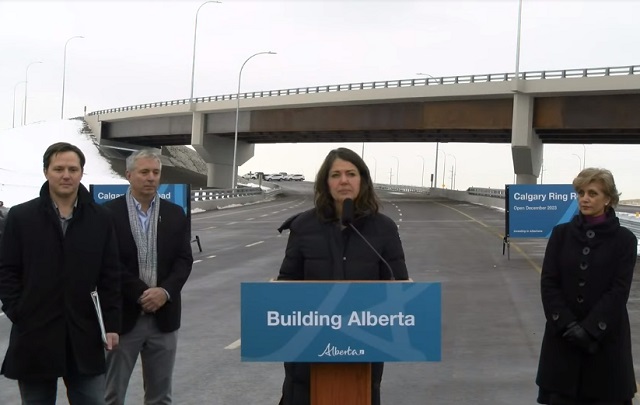
Christmas comes early for Calgary drivers
The Calgary Ring Road is now ready to be opened to public traffic, several months ahead of schedule.
Calgary’s ring road is one of the largest infrastructure undertakings in Calgary’s history and includes 197 new bridges and 48 interchanges. The 101-kilometre free-flowing Calgary Ring Road will open to traffic Dec. 19, completing a project decades in the making.
“Calgary’s ring road is a project that has been decades in the making and its completion is a real cause for celebration. This has been an important project and our government got it done. With this final section completed, travelling just got a little easier for families and for workers. This will not only benefit Calgarians and residents in the metro region, it will provide a boost to our economy, as goods can be transported more easily across our province.”
Although construction of the entire ring road project began in 1999 under former premier Ralph Klein, discussions on a ring road around the City of Calgary began as early as the 1950s. In the late 1970s, under former premier Peter Lougheed, high-level planning and land acquisition started and a transportation utility corridor was established to make the Calgary Ring Road a reality.
“The final section of the Calgary Ring Road is now complete, and I’d like to acknowledge the work done by former premiers and transportation ministers and their vision to build Alberta. I’m proud to announce that the final section was completed on budget and months ahead of schedule.”
“I’m thrilled to see the Calgary Ring Road project completed. It was something I have helped shepherd through the process since 2014. Finally, all the hard work put in by everyone has become a reality. The Calgary Ring Road will provide travellers with over 100 kilometres of free-flow travel, create new travel options for the City of Calgary and surrounding area and provide improved market access across the region.”
Opening the ring road means new travel options for Calgarians, which will draw traffic away from heavily travelled and congested roads such as the Deerfoot Trail, 16th Avenue, Glenmore Trail and Sarcee Trail. For commercial carriers, the ring road provides an efficient bypass route, saving time and money for the delivery and shipment of goods and services.
“The ring road investment generated thousands of local jobs and will now play an integral role in keeping Calgarians and the economy moving. This important transportation link will ease congestion on city routes and greatly improve connectivity and access for businesses transporting goods.”
The ring road is a critical component to growing economic corridors in Alberta and Western Canada, as it connects the Trans-Canada Highway to the east and west, and the Queen Elizabeth II Highway and Highway 2 to the north and south. It is also part of the CANAMEX corridor, which connects Alberta to the highway network in the United States and Mexico.
The completion of the ring road is a major boost for Calgary, opening new business opportunities and supporting key components of the Calgary economy. It sends a signal to businesses and investors that Calgary has a strong highway infrastructure, providing economic corridor connections through the entire region.
“With one of the smoothest commutes in Canada and the capacity to reach 16 million customers by road within a single day, Calgary offers unmatched quality of life and economic opportunities. The triumphant completion of the Calgary Ring Road further improves our capacity to attract even more companies, capital and talent to our city.”
“This is an exciting step forward for the Calgary Metropolitan Region. This key artery will not only improve the quality of life for the residents of the region, it is also a key economic enabler and we are thrilled to see its completion.”
Quick facts
- Stretched into a single lane, the highway is 1,304 kilometres long, the distance from Calgary to Winnipeg.
- Other sections opened in 2009, 2013, 2020 and 2023.
- The West Calgary Ring Road is the final piece of the ring road project.
-
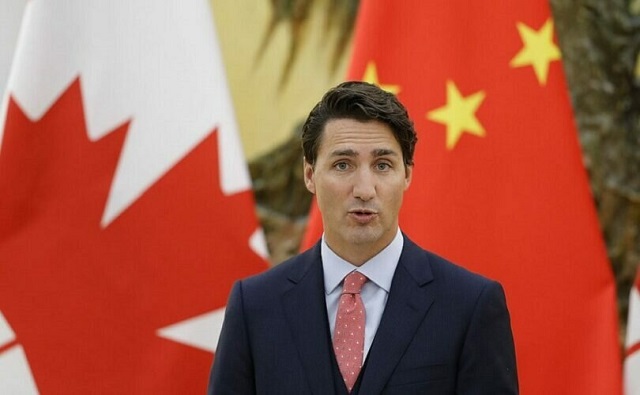
 espionage1 day ago
espionage1 day agoTrudeau’s office was warned that Chinese agents posed ‘existential threat’ to Canada: secret memo
-
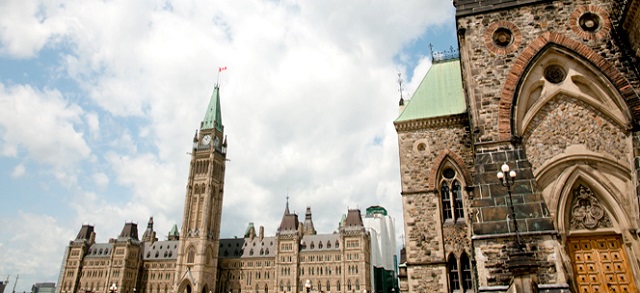
 Economy1 day ago
Economy1 day agoMassive deficits send debt interest charges soaring
-

 COVID-191 day ago
COVID-191 day agoPro-freedom Canadian nurse gets two years probation for protesting COVID restrictions
-

 Business1 day ago
Business1 day agoBusiness investment key to addressing Canada’s productivity crisis
-

 International2 days ago
International2 days ago28-year-old Dutch woman to be killed by assisted suicide after doctors deem her autism ‘untreatable’
-

 International1 day ago
International1 day agoBrussels NatCon conference will continue freely after court overturns police barricade
-
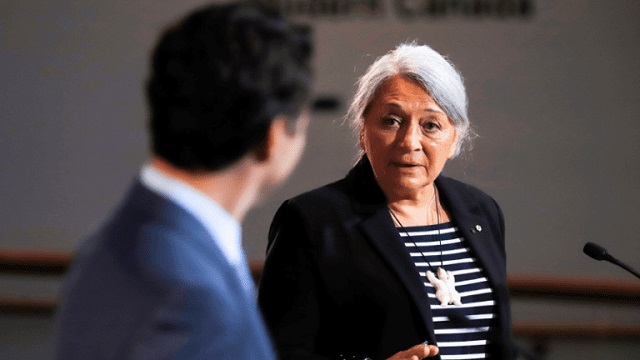
 MacDonald Laurier Institute2 days ago
MacDonald Laurier Institute2 days agoThe Governor General deserves better, but we deserve impartiality
-
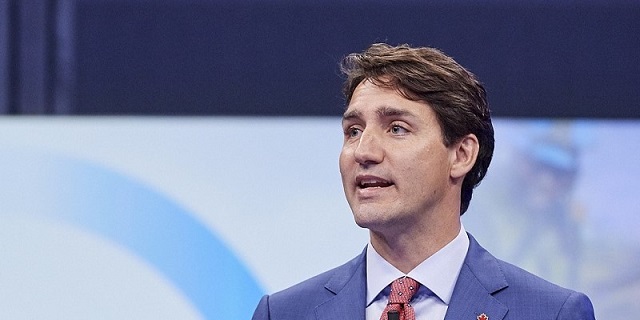
 Business1 day ago
Business1 day agoFederal budget fails to ‘break the glass’ on Canada’s economic growth crisis






